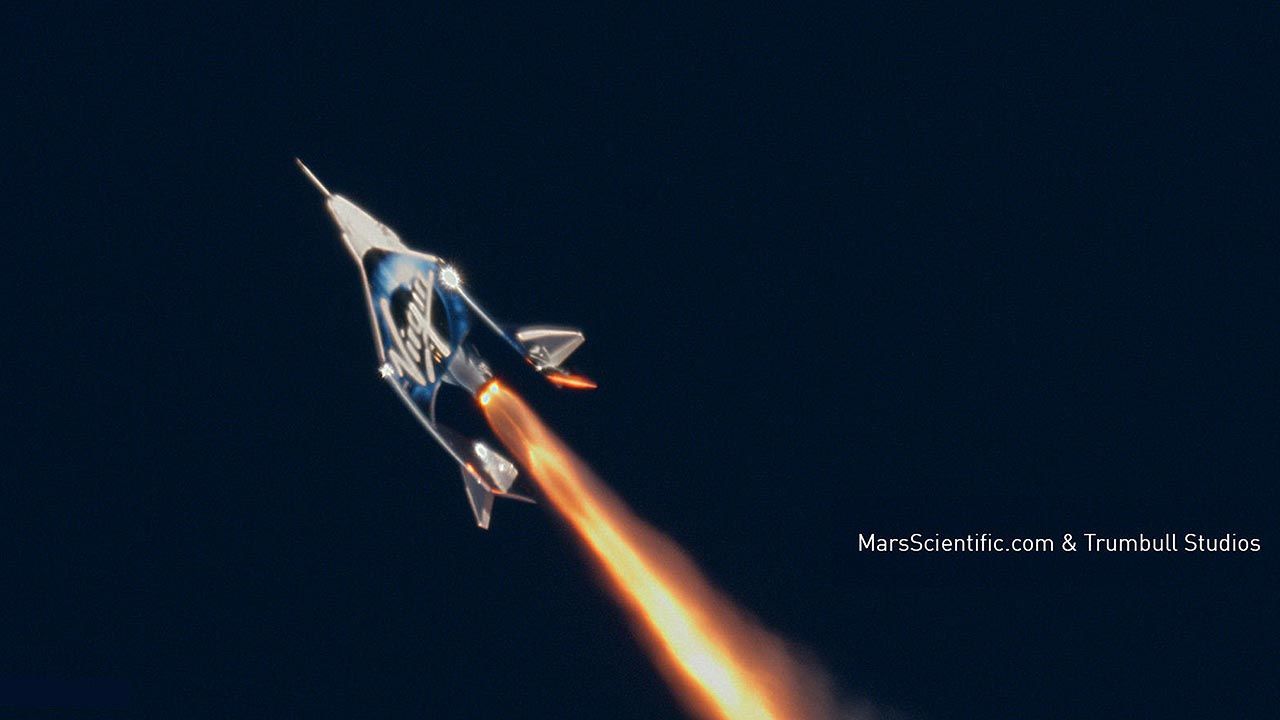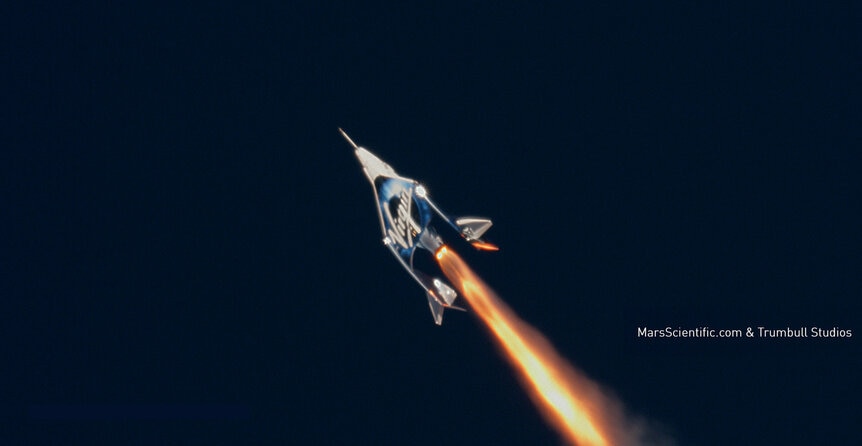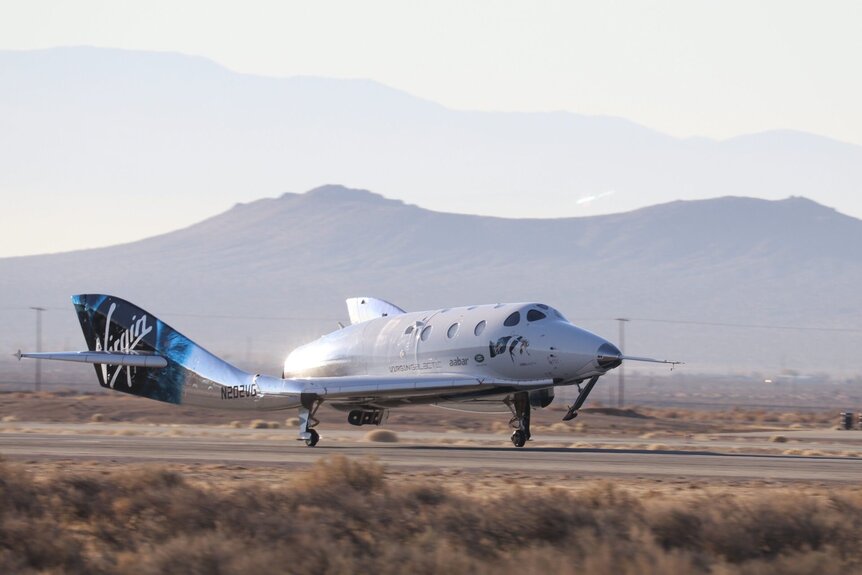Create a free profile to get unlimited access to exclusive videos, sweepstakes, and more!
Virgin Galactic makes it to space! Depending on what you mean by 'space'!

On December 13, 2018, the Virgin Galactic rocketplane VSS Unity was carried into the sky literally under the wing of its mothership VMS Eve. When they reached a height of over 13 kilometers, Unity was dropped. After a few seconds its rocket motors kicked in, accelerating the spaceplane to nearly three times the speed of sound, putting it on a parabolic path that took it soaring to a height above Earth of over 82 kilometers. As it fell back to Earth and the air got thick enough, Unity lived up to its adjectival suffix, becoming an airplane that glided safely back to the ground.
This is a pretty big deal. It was the fourth powered test flight of Unity and, depending on how you look at it, the first time it reached space. I'll get back to that particular issue in a sec, but I want to make some things clear first.
This is the highest flight of a SpaceShipTwo type spaceplane so far. The first model, VSS Enterprise, flew several test flights but in 2014 suffered a catastrophic failure, killing the co-pilot and injuring the pilot. Unity is the second SS2 spaceplane built, and has modifications to prevent the same sort of issue that Enterprise suffered.
This flight was suborbital, meaning that it essentially went up and back down again. This is very different than orbital flight, which takes a lot more energy to achieve. Still, a lot can be done on a short flight like this. The vehicle, payloads, and passengers all experience several minutes of microgravity (also called freefall, though weightlessness is a common if misleading term) once the rockets turn off and the vehicle undergoes ballistic flight up, over, and down its parabolic path. It's enough time to do all sorts of interesting experiments, and in fact four experiments flew on this flight; Virgin Galactic notes it's their first revenue-generating flight. That's a great milestone.
Also, people will pay a lot of money to experience this voyage. A lot. Tickets will set you back a cool quarter million, and there's quite a long queue of ticket holders (in fact, all available seats have already been booked).
But… did it really reach space?
Well, that depends on how you define space. Our atmosphere gets thinner and thinner with altitude, so it doesn't have an edge where you can simply state, "Here be space." In a sense, you have to pick a height above the surface and define it as the demarcation of space, which is a little bit arbitrary.
But not completely so. This article on The Verge explains it very well, but in a nutshell one way to think of it is that space begins where, as my friend Jonathan McDowell puts it, the atmosphere isn't as important as gravity if you're designing a vehicle. Below that height there's enough air that you can't ignore it, and above that you can, at least for short periods. Although it's not exact, this height is about 80 kilometers above sea level.
In general, the internationally (though informally) agreed-upon height is 100 km — this is called the Kármán line. So whether Unity achieved actual spaceflight is up to some argument. Again, this is somewhat arbitrary (though the Verge article by Loren Grush points out there are legal ramifications, too).
However, having read Jonathan's arguments, I find his reasoning compelling… and mind you, I've always used the 100 km number. So I'm happy to say the Unity, and its two crew, Mark Stuckey and Frederick Sturckow, made it to space (noting that Sturckow is a four-time Space Shuttle astronaut already).
This means some other milestones, too. It's the first time a crewed commercial vehicle has ever traveled to space. Also important, at least in the short term, is that this is the first crewed launch to space from American soil since the last Space Shuttle mission in 2011!
I wondered if Boeing or SpaceX would reach that particular mark first, but here we are. And yes, the Virgin Galactic launch was a suborbital flight, and both of those other companies are planning crewed orbital flights for next year. That's all fine, and I'm sure there will be some squabbling by everyone about who achieved what when, but I don't want to lose sight of the bigger picture:
Access to space is getting easier.
It's still incredibly hard, and an amazing technological achievement. But we're seeing, right now, these first small steps being taken. National pride aside — and I'll admit to feeling some small amount of it, so desperately needed right now — this is, I think, good for humanity. There's a long way to go, and a lot of critical issues to consider as we do this, but space exploration is important.
So here's to it. Per ardua ad astra.




























